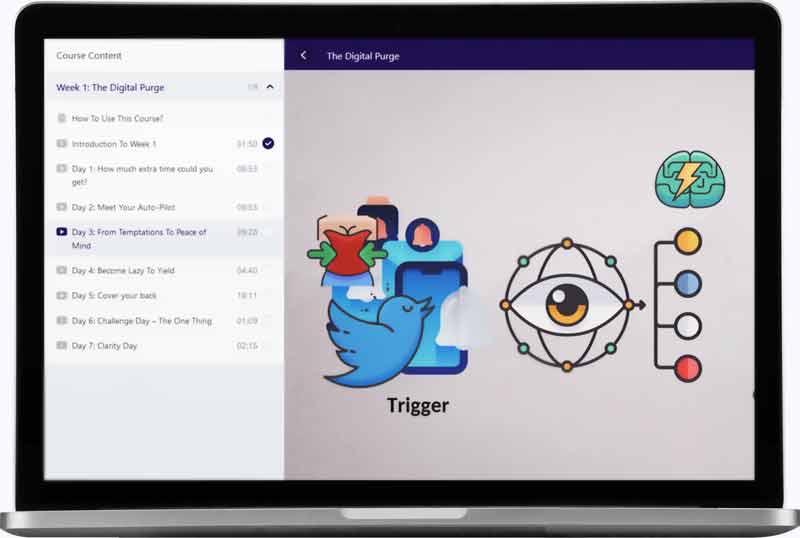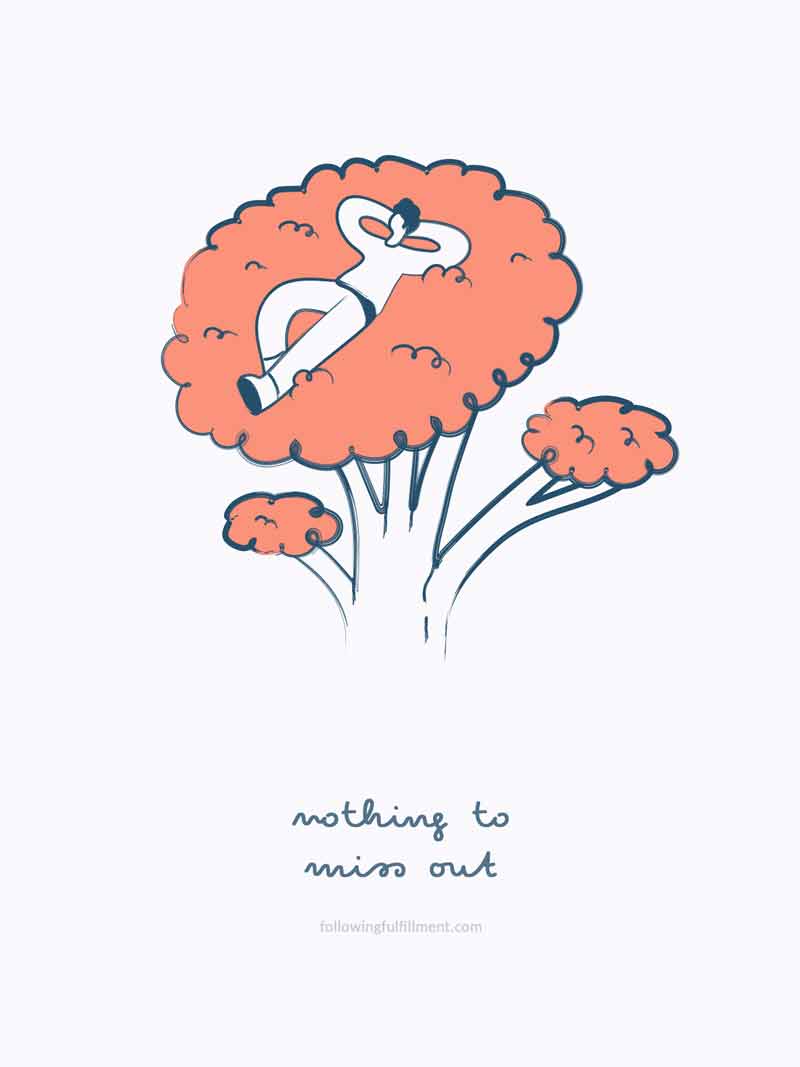Welcome to our digital detoxing series! A series on how to stop addictions toFortnite,Facebook,Instagram,porn,Netflix, Youtube,Tinder… Findall the posts about digital addiction. Today, let’s talk about how to quit the linkedin addiction.
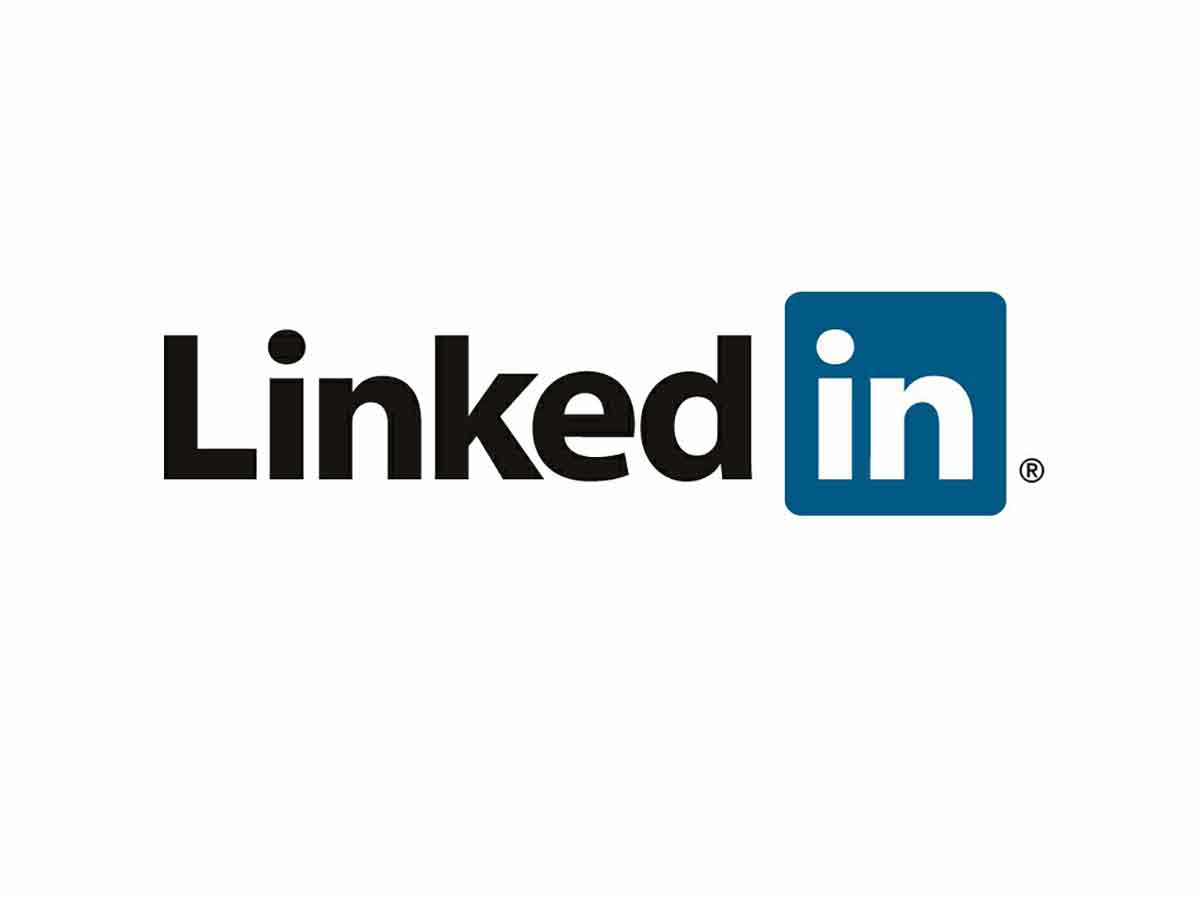
- What’s the linkedin addiction?
- Addiction to linkedin, a “real” addiction?
- What’s considered linkedin addiction
- How much linkedin is too much?
- Some technology addiction facts & statistics
- Symptoms & Causes of the linkedin addiction
- Why is linkedin so addictive?
- Possible causes of linkedin dependency
- Symptoms, Causes and Signs of linkedin addiction
- Problems, impacts & bad effects of linkedin
- Some benefits of linkedin
- health problems
- impact on brain & mental health
- impact on relationships
- How to stop & quit your linkedin addiction
- Main steps and solutions to break the linkedin addiction
- Best linkedin blocker apps & functionalities
- where to seek extra help?
- Conclusion
- To Go Further
- How to help someone with linkedin addiction
- Best books about technology addiction
- Research about technology addiction
What is the linkedin addiction?
About linkedin
LinkedIn is a professional social network that helps users build connections and advance their careers.
Addiction to linkedin, a “real” addiction?
Officially an addiction?
First, let’s have a look to the DSM-5,the Diagnostic and Statistical Manual of Mental Disorders. Does it includes linkedin addiction?
No, linkedin addiction is not listed in the DSM-5. The DSM-5 is the fifth edition of the Diagnostic and Statistical Manual of Mental Disorders, which is a classification system for mental health conditions.
So what means “linkedin addiction”?
Linkedin addiction is a condition where an individual becomes overly dependent on the professional networking site, LinkedIn, for communication, career advancement, and emotional fulfillment. The person may spend excessive amounts of time on the platform, neglecting other parts of life, such as work, family, and social activities. They may feel an intense need to constantly check for updates, messages, and notifications. Other signs of LinkedIn addiction include feeling irritable when not able to access the site, and thoughts and feelings of insecurity when not actively engaged in the platform.
What is considered linkedin addiction?
- 1. Spending more than two hours per day on LinkedIn.
- 2. Becoming increasingly obsessed with viewing profiles on the platform.
- 3. Having difficulty not logging in to LinkedIn multiple times per day.
- 4. Feeling anxious or agitated when not on the platform.
- 5. Having difficulty concentrating on other tasks because of thoughts of LinkedIn.
- 6. Constantly checking notifications and messages on the platform.
- 7. Neglecting important tasks or relationships in pursuit of LinkedIn activities.
- 8. Becoming overly preoccupied with increasing the number of connections.
- 9. Excessive engagement in online interactions such as commenting and messaging.
- 10. Ignoring social cues and neglecting face-to-face conversations due to LinkedIn activities.
How much linkedin is too much?
How much time someone spends on LinkedIn depends on their individual goals and needs. Generally speaking, spending more than a few hours per day on the platform is likely too much.
Some technology addiction facts & statistics
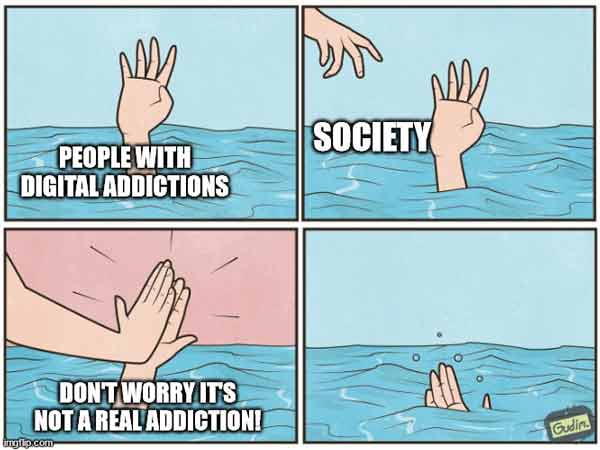
Technology addiction is a growing concern in today’s world. Here are some statistics related to technology addiction:
- 1. According to a 2019 survey by Common Sense Media, 50% of teens feel addicted to their mobile devices.
- 2. A study conducted by the Pew Research Center found that 28% of adults in the US feel they are constantly online.
- 3. A survey conducted by the American Psychological Association found that 43% of Americans are constantly checking their electronic devices for email, texts, or social media updates.
- 4. A survey conducted by the Royal Society of Public Health in the UK found that social media is the most addictive technology, with 63% of respondents reporting that they check their social media accounts at least once a day.
- 5. In a study conducted by the University of Maryland, students were asked to give up all technology for 24 hours. Many of the participants experienced withdrawal symptoms such as anxiety, irritability, and even physical symptoms such as headaches.
- 6. A study conducted by the University of Gothenburg in Sweden found that excessive use of mobile phones can lead to sleep disorders, depression, and anxiety.
- 7. According to the World Health Organization, internet addiction disorder (IAD) is a real condition that can have serious negative consequences on an individual’s mental and physical health.
Is the linkedin addiction widespread?
Like any social media platform, it is possible for some individuals to become addicted to using LinkedIn. People may find themselves constantly checking for notifications, spending excessive amounts of time scrolling through their newsfeed, and feeling anxious or stressed when they are not able to access the platform. It is important for individuals to be aware of their social media usage and to take breaks when necessary to avoid addiction or negative impacts on their mental health.
Symptoms, Causes and Signs of linkedin addiction
Why is linkedin so addictive?
Linkedin is so addictive because it provides a platform for users to connect with professionals, build their network, and find job opportunities. It also offers users the chance to learn and develop their skills, as well as to stay up-to-date with industry trends. All of this makes for an engaging and compelling user experience that keeps people coming back for more.
Possible causes of linkedin dependency
- 1. Fear of Missing Out (FOMO): The fear of missing out on new opportunities or connections is what drives many people to be active on LinkedIn.
- 2. Professional Curiosity: Advanced searches, news feeds, and groups offer an array of information that professionals crave, leading to many hours spent on the site.
- 3. Networking: LinkedIn offers a great platform to network with other professionals, and many people use the site to make connections that could benefit their career.
- 4. Self-Promotion: LinkedIn allows users to promote their accomplishments and skills, creating a platform to show off their hard work.
- 5. Job Searching: LinkedIn is an invaluable tool for job seekers to research companies, apply for positions, and connect with potential employers.
Signs & Symptoms of linkedin addiction
Now let’s see if you have the linkedin addiction problem.
- 1. You log onto LinkedIn multiple times a day.
- 2. You check your notifications every time you receive an email or text notification.
- 3. You always have a few posts in your queue, ready to be published.
- 4. You’re constantly looking for new connections and ways to build your network.
- 5. You’re always researching new companies and job opportunities.
- 6. You read every article, post, and comment that pops up in your feed.
- 7. You spend more time on LinkedIn than you do on other social media sites.
Problems, impacts & bad effects of linkedin: should you quit?

What are some benefits of linkedin
Pros of LinkedIn:
- 1. Networking Opportunities: LinkedIn provides a platform for professionals to build relationships and connect with potential employers, business partners, and customers.
- 2. Professional Branding: LinkedIn allows users to create a professional profile that showcases their skills, experience, and accomplishments.
- 3. Job Opportunities: LinkedIn provides access to millions of job postings, making it easier to find a job that is a good fit.
- 4. Job Applications: LinkedIn makes it easier to apply for jobs, as employers can easily view a candidate’s profile, skills, and experience.
- 5. Professional Development: LinkedIn provides access to educational resources and tools, such as webinars and courses, to help users develop their skills and knowledge.
- 6. Business Insights: LinkedIn offers insights into the current trends in the business world.
- 7. Business and Employment Solutions: LinkedIn provides tools to help businesses and recruiters find the best candidates for their open roles and to manage their recruitment process.
Why is LinkedIn so great?
LinkedIn is great because it provides an easy way for professionals to connect, share information, and stay up-to-date on the latest trends in their industry. It also provides valuable insights and resources to help professionals grow their career and build their network. Finally, LinkedIn is a great platform for recruiters and businesses to find qualified candidates and manage their hiring process.But at the opposite, what can be some linkedin addiction problems addicts suffer from?
general health problems
- 1. Increased Stress: Spending too much time on LinkedIn can lead to increased stress levels. This is especially true if you are constantly comparing yourself to your peers or trying to impress them with your accomplishments.
- 2. Sleep Deprivation: Constantly checking your LinkedIn notifications or scrolling through your newsfeed can lead to sleep deprivation. This can cause fatigue, difficulty concentrating, and even mood swings.
- 3. Isolation: Spending too much time on LinkedIn can lead to a feeling of isolation. This is especially true if you are not actively engaging with other users or participating in conversations.
- 4. Mental Health Problems: Excessive use of LinkedIn can lead to mental health problems such as anxiety, depression, and low self-esteem. This is especially true if you are too focused on comparing yourself to others or trying to impress them.
linkedin and sleep disorder
It is unlikely that LinkedIn can create sleep disorders or sleep problems. However, excessive use of electronic devices such as smartphones, tablets, and laptops before bedtime can affect sleep quality. This is because the blue light emitted by these devices can suppress the production of melatonin, a sleep-inducing hormone, making it harder to fall asleep.
Additionally, using social media platforms like LinkedIn before bed can cause stress and anxiety, which can also disrupt sleep. It is recommended to limit screen time before bed and practice good sleep hygiene to promote healthy sleep habits.
linkedin affecting your brain & mental health: bad for brain and mental health?
Some effects of linkedin on your brain
- 1. Time Waster: Spending too much time on LinkedIn can be a huge time waster. It can be easy to get lost in the news feed or spending too much time crafting the perfect profile.
- 2. False Sense of Accomplishment: It can be easy to become addicted to the feeling of accomplishment that comes with gaining more followers, likes, and comments on LinkedIn. However, these numbers can be misleading, as they don’t mean anything in terms of real-world success.
- 3. Stress: The pressure of having to constantly post updates, keep up with networking, and manage your profile can be very stressful. It can be easy to become overwhelmed with all the tasks associated with using LinkedIn.
- 4. Negative Thinking: While it can be a great tool for networking and job hunting, it can also be a source of negative thinking. It’s easy to compare yourself to others, which can lead to feelings of inadequacy or jealousy.
Some effects of linkedin on your mental health
- 1. Comparison: LinkedIn can be a dangerous place for comparison. Seeing your peers post about their accomplishments and successes can lead to feelings of envy, anxiety, and low self-esteem.
- 2. Stress: Posting on LinkedIn can be stressful and time-consuming. Crafting the perfect post, worrying about what others will think, and trying to stay ahead of the competition can all cause an immense amount of stress.
- 3. Social Pressure: LinkedIn can be a breeding ground for social pressure. You might feel compelled to post frequently in order to stay visible to employers, recruiters, and peers. This can be overwhelming and can lead to burnout.
- 4. FOMO: Fear of missing out (FOMO) is a real problem on LinkedIn. Watching your peers get promoted or land new jobs can make you feel like you’re not keeping up or not as successful as them.
- 5. Imposter Syndrome: The pressure and competition on LinkedIn can lead to imposter syndrome. You may feel like you’re not good enough or that you’re not achieving as much as everyone else.
Does linkedin cause stress and anxiety?
Yes, LinkedIn can cause stress or anxiety for some individuals. Some reasons why LinkedIn can cause stress or anxiety include:
- 1. Pressure to maintain a professional image: LinkedIn is a professional networking site, and individuals may feel pressure to present themselves in the best possible light to potential employers or clients. This pressure can lead to stress and anxiety.
- 2. Fear of missing out (FOMO): LinkedIn is a platform where individuals can connect with others in their industry, learn about job opportunities, and stay up-to-date on industry news. However, constantly checking LinkedIn can create a fear of missing out on important information, which can lead to stress and anxiety.
- 3. Comparison with others: LinkedIn allows individuals to see the accomplishments and successes of others in their industry. This can create a sense of competition and comparison, leading to stress and anxiety.
- 4. Job search anxiety: LinkedIn is often used as a platform for job searching, and the job search process can be stressful and anxiety-provoking.
Overall, while LinkedIn can be a useful tool for professional networking and career advancement, it can also contribute to stress and anxiety for some individuals.
Can linkedin addiction lead to sadness and depression?
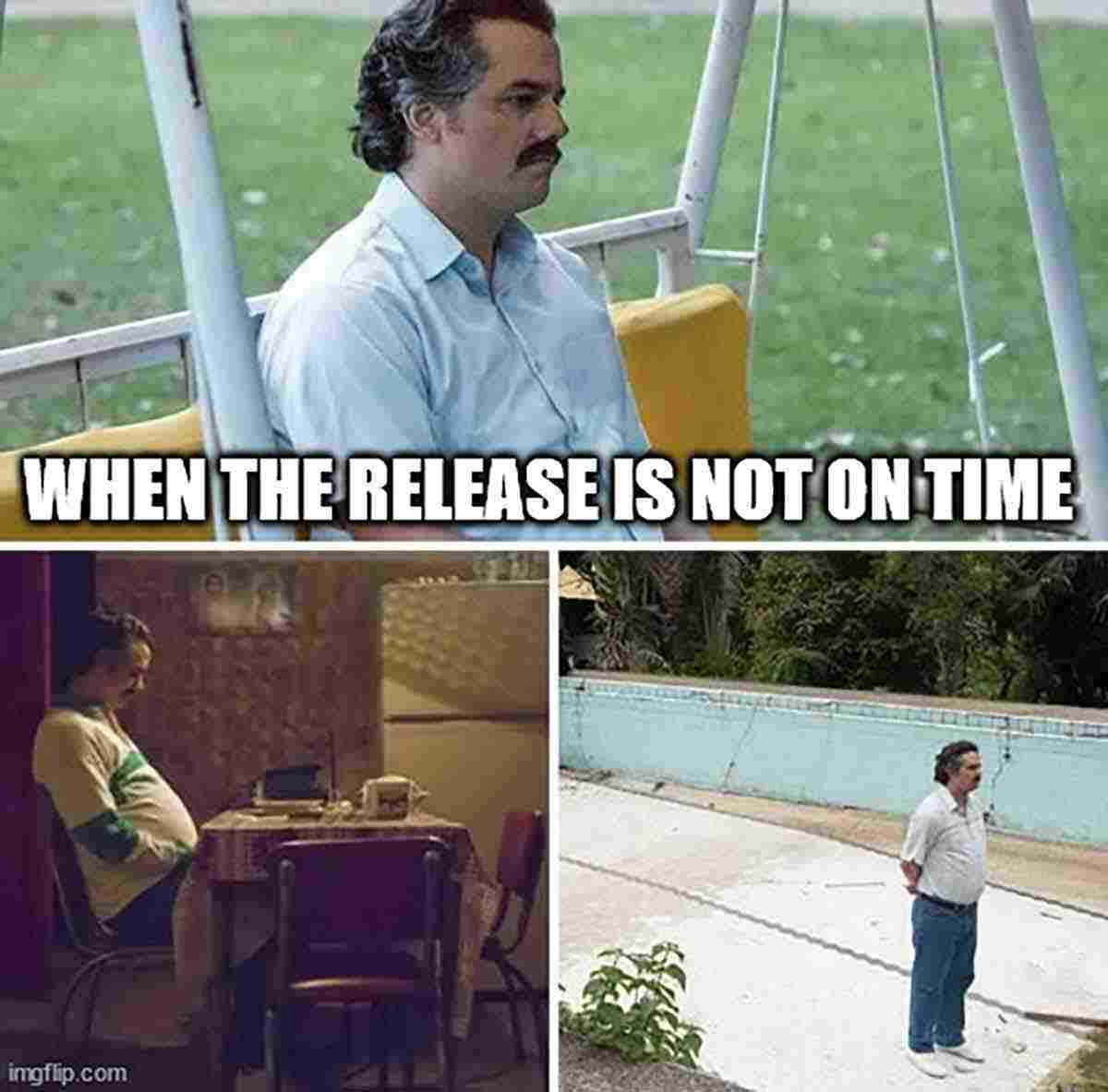
Yes, it is possible for LinkedIn addiction to lead to sadness and depression. When someone spends too much time on LinkedIn, they may become overly focused on their professional networks, job prospects, and career status. This can lead to feelings of anxiety, stress, and pressure to perform.
Additionally, if someone is constantly comparing their professional achievements to those of others on LinkedIn, it can create feelings of inadequacy and low self-esteem, which can contribute to depression. Finally, if someone is spending excessive amounts of time on LinkedIn, they may be neglecting other important aspects of their life, such as spending time with friends and family, exercising, and pursuing hobbies, which can also contribute to feelings of sadness and depression.
Dopamine and linkedin
Dopamine is a neurotransmitter that plays a key role in pleasure, motivation, and reward pathways in the brain. LinkedIn, on the other hand, is a social networking platform designed for professionals to connect, share content, and explore job opportunities.
The relationship between dopamine and LinkedIn is that the platform can activate the brain’s reward system, triggering the release of dopamine. When we receive likes, comments, or messages on LinkedIn, our brain releases dopamine, creating a sense of pleasure and satisfaction.
This dopamine release can also motivate us to continue using the platform, engaging with others, and sharing content. For example, when we receive positive feedback on a post or article we shared, our brain might release dopamine, encouraging us to continue creating and sharing content.
Overall, dopamine and LinkedIn can be linked in terms of the psychological and emotional impact the platform can have on its users.
linkedin effects on Focus, productivity, attention span, academic performance…
LinkedIn is a professional networking site that can be used to build connections, network, and explore job opportunities. While LinkedIn can be a useful tool for career advancement and professional development, it can also be a distraction and a time-waster.
Here are some potential effects of LinkedIn on focus, productivity, attention span, and academic performance:
- 1. Distraction: LinkedIn can be a distraction from important tasks and responsibilities. Spending too much time on the site can interfere with work and academic commitments.
- 2. Procrastination: LinkedIn can also be a means of procrastination, where individuals may spend hours browsing profiles instead of completing more important tasks.
- 3. Lack of focus: Constant notifications and updates from LinkedIn can disrupt focus and concentration, making it difficult to stay on task.
- 4. Reduced productivity: Spending too much time on LinkedIn can lead to reduced productivity and lower quality work.
- 5. Time management: Poor time management can impact academic performance, and spending excessive time on LinkedIn can make it difficult to manage time effectively.
Overall, while LinkedIn can be a valuable tool for professional growth, it is important to use it in moderation and avoid allowing it to become a distraction from other important responsibilities.
A word about ADHD and linkedin
There is no definitive answer to this question, as different people with ADHD may interact with LinkedIn in different ways depending on their individual experiences and symptoms. However, some studies suggest that people with ADHD may struggle with certain aspects of LinkedIn, such as maintaining focus on professional networking, managing multiple connections and interactions, and staying organized with job search or career development activities.
Additionally, individuals with ADHD may be more prone to impulsivity and distraction, which could impact their ability to use LinkedIn effectively. On the other hand, some people with ADHD may find that LinkedIn offers a structured and organized platform that can help them stay on track with their career goals and connect with others in a meaningful way. Ultimately, the impact of ADHD on LinkedIn interaction will depend on many factors, including the severity of symptoms, individual coping strategies, and other personal and environmental factors.
affecting your relationships
linkedin and self-esteem
LinkedIn can have both positive and negative effects on a person’s self-esteem. Here are some ways LinkedIn can affect self-esteem:
Positive effects:
- 1. Validation: When someone receives positive feedback, endorsements, or recommendations on LinkedIn, it can boost their self-esteem and confidence.
- 2. Networking: LinkedIn provides users with the opportunity to connect with professionals in their industry, which can help boost their confidence and sense of belonging.
- 3. Job opportunities: LinkedIn can be a great way to find job opportunities, which can increase a person’s self-esteem and confidence in their skills and abilities.
- 4. Professional development: LinkedIn provides users with access to a wealth of resources and information, which can help them develop their skills and expertise, leading to increased self-esteem.
Negative effects:
- 1. Comparison: Seeing other people’s posts and achievements can lead to feelings of inadequacy and lower self-esteem.
- 2. Lack of engagement: If a person’s posts or profile aren’t receiving much engagement, it can lead to feelings of rejection and lower self-esteem.
- 3. Imposter syndrome: LinkedIn can exacerbate feelings of imposter syndrome, where a person feels like they don’t belong or are not qualified for their job or industry.
Overall, LinkedIn can have a significant impact on a person’s self-esteem, but it’s important to be mindful of how it’s affecting you and take steps to mitigate any negative effects.
linkedin addiction leads to isolation and loneliness?
.jpg)
Yes, excessive use of LinkedIn can potentially lead to isolation and loneliness. This is because spending too much time on social media platforms like LinkedIn can lead to a decrease in face-to-face interactions and social connections in real life. Instead of interacting with people in person, individuals may become more reliant on virtual interactions, which can ultimately lead to feelings of loneliness and isolation.
Additionally, constantly comparing oneself to others on LinkedIn can also contribute to feelings of inadequacy and social isolation. It’s important to maintain a healthy balance between online and offline interactions to avoid the negative effects of social media addiction.
Effects of linkedin on your relationship
Positive effects of LinkedIn on your relationship:
- 1. Networking: LinkedIn is a powerful networking tool that allows you to connect with people in your industry. You can use it to expand your professional network and meet new people who can help you grow your career.
- 2. Job opportunities: LinkedIn is also a great platform to find job opportunities. You can search for job openings, connect with recruiters, and even apply for jobs directly through the platform.
- 3. Professional development: LinkedIn has a wealth of resources for professional development, including articles, courses, and webinars. You can use these resources to improve your skills and stay up-to-date on industry trends.
Negative effects of LinkedIn on your relationship:
- 1. Time-consuming: LinkedIn can be a time-consuming platform, and if you spend too much time on it, it can take away from your personal life and relationships.
- 2. Comparison: LinkedIn can also lead to comparison with others in your industry, which can be stressful and harmful to your mental health.
- 3. Inauthenticity: Some people on LinkedIn may create a false image of themselves or their accomplishments, which can lead to feelings of inadequacy or imposter syndrome.
How To Stop & quit Your linkedin Addiction
Finally you think you are addicted to linkedin and you are wondering how to quit it? How to break and overcome your cravings for linkedin?
Here are the best solutions, steps, supports, resources and help you can get to treat your linkedin addiction.
Main steps and solutions to break the linkedin addiction
- 1. Limit your time spent on LinkedIn: Decide on a maximum time limit you will spend on LinkedIn each day or each week. Stick to this limit and use a timer to help you stay within your limit.
- 2. Unfollow accounts and mute notifications: Unfollow accounts that make you feel envious or that trigger your addiction. Mute notifications so that you don’t get constant updates and reminders of new content.
- 3. Replace the habit: Replace the time you spend on LinkedIn with something else that brings you joy. It could be reading, exercising, or starting a hobby.
- 4. Get support: Talk to a friend, family member, or therapist about your LinkedIn addiction and work on ways to better manage it.
- 5. Take a break: If the addiction is too strong, take a break from LinkedIn altogether. Delete the app from your phone and stay away from it for a few days or even weeks.
Actually, that’s what most documentation out there is about… However, quitting a digital addiction can be a bit trickier than that.
So our team, after testing many ways, designed a bulletproof way to overcome them. Here are some clear and practical steps that are very powerful to quit a digital addiction, including linkedin:
1. Purge temptations: Get rid of linkedin
First, cleaning your life from temptations is much easier than resisting to them. Disable or delete your linkedin accounts, change the password and hide it somewhere you can’t access easily, keep your phone / computer far away… Out of sight out of mind.
Here is a video from our course the The Digital Purge. on how to add resistance to your temptations, so you become so lazy to engage with them that you give them up:
